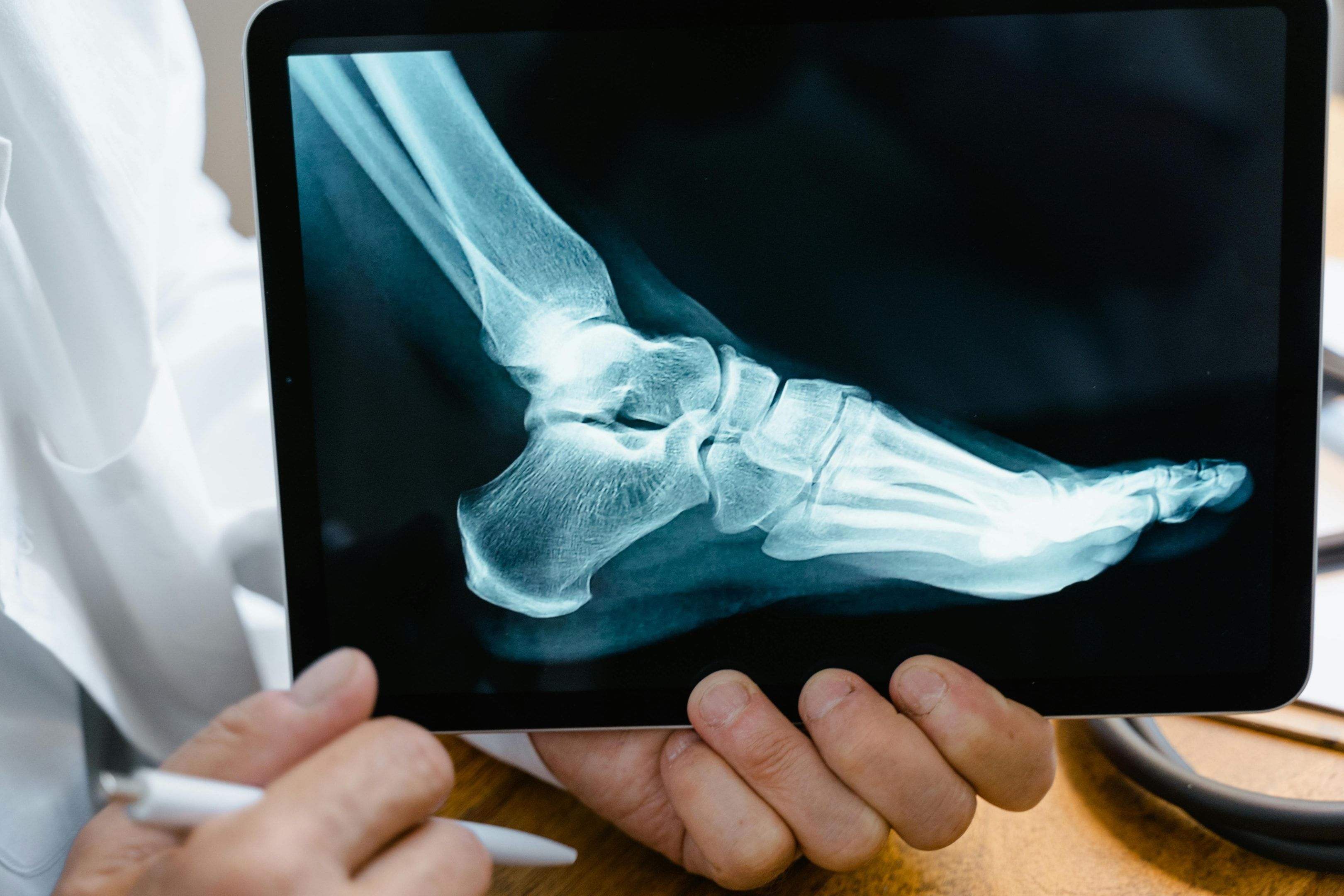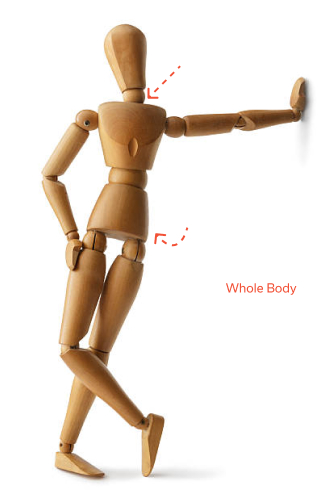Ankle Dislocation: First Aid, Treatment, and Rehabilitation
By Nigel Chua
Pure ankle dislocation, especially without a fracture, is considered a relatively rare injury compared to ankle sprains and ligament tears. It makes up just 0.065% of all ankle injuries and less than 0.5% of all dislocations. When the ankle joint is forcibly displaced, it disrupts the alignment of the bones, ligaments, and soft tissues, often leading to complications such as ankle fractures or vascular compromise. Regardless of the severity of this injury, it requires immediate attention, whether it's first aid, treatment, or rehabilitation. Understanding how ankle dislocation occurs, its symptoms, and the treatment process can significantly aid in the proper recovery and prevention.
How Does Ankle Dislocation Happen?
Ankle dislocation occurs when the tibia and fibula (lower leg bones) lose alignment with the talus bone in the foot. When displaced from their normal alignment due to a strong force, it stretches or tears ligaments that hold them together. This severe injury is often caused by high-impact trauma, such as motor vehicle accidents, falls, or sports injuries. Axial loading, twisting motions, or severe stress on the ankle ligaments can lead to pure ankle dislocation or fracture dislocation, depending on whether broken bones are involved.
Anterior dislocations occur when the talus moves forward, while posterior dislocations happen when it shifts backwards. Lateral dislocations, though less common, involve sideways displacement. Ankle dislocation can also happen partially. This phenomenon is known as subluxation.
What Is a Subluxation?
Unlike a true dislocation, subluxation refers to a partial displacement of the ankle joint. The bones temporarily lose alignment but return to normal positions without external intervention. Essentially, a subluxation is a less severe injury than a full dislocation, often causing less noticeable deformity and potentially less damage to surrounding ligaments. However, it may still damage the ligaments and increase the risk of future instability or posttraumatic arthritis if not addressed.
Who Is at a Higher Risk for Ankle Dislocation?
Certain risk factors increase the likelihood of sustaining an ankle injury, specifically a dislocated ankle. People at a higher risk for ankle dislocation include those who participate in high-impact sports and have a history of ankle sprains or fractures. The following groups or demographics are also prone to being predisposed to dislocation:
- Those with medical conditions such as osteoporosis or other bone-weakening diseases
- Those working under occupational hazards like prolonged standing or risky movements
- Those who have ligamentous laxity due to conditions like Ehlers-Danlos syndrome
- Those with congenital abnormalities in the ankle joint structure
- Those with poor muscle strength
Complications
Joint stiffness is often the common complication, often requiring ankle pain physiotherapy to regain full range of motion. Like other ankle sprain physiotherapy treatments, joint stiffness rehabilitation focuses on strengthening the surrounding muscles, improving flexibility, and restoring balance.
Damage to the cartilage lining the joint during a dislocation can also lead to the development of arthritis, which causes chronic pain. Dislocations associated with fractures involving the tibia, fibula, or talus can further complicate the injury. Depending on the severity of the dislocation, nerves around the ankle may be injured, causing numbness or tingling. Those that come with open wounds can increase the risk of infection.
A long-term consequence of joint damage is posttraumatic arthritis. The extreme cases are malunion (ankle bones don't align correctly) and nonunion, where the fracture fails to heal at all.
Ankle Dislocation Symptoms
An ankle dislocation typically causes pain and discomfort. Below are more specific manifestations or symptoms of a dislocated ankle:
- Severe pain and swelling
- Deformity in the ankle or foot
- Bruising or discolouration of the skin
- Limited or no joint motion
- Numbness or tingling if nerves are injured
- Inability to bear weight on the affected foot
- Soreness, tender, and painful to the touch
Diagnosing a Dislocated Ankle
Ankle dislocations can occur with or without a broken bone. They can happen to people of all ages, but you may be at greater risk if you have had an ankle sprain, fracture, or dislocation in the past, or an ankle that has been abnormal since birth.
If you suspect you have a dislocated ankle, you should contact a physician or healthcare professional. The longer you wait to see a doctor, the longer the healing process will be.
A physical exam by a healthcare provider identifies visible deformities, swelling, and tenderness to properly diagnose ankle dislocation. X-rays or other imaging tests confirm the extent of the injury, including any associated fractures or ligament damage.
First Aid for Ankle Dislocation
For a dislocated ankle, the primary first aid is to immobilise the ankle immediately. Follow these steps:
- Do not attempt to move the ankle into its normal position. Improper handling can worsen the injury.
- Keep the limb elevated to reduce swelling.
- Apply a cold compress for short periods to control pain.
- Immobilise the ankle using a splint or similar support.
- Seek help from the nearest emergency department for immediate reduction.
Ankle Dislocation Treatment
Treatment focuses on restoring the normal position of the ankle joint and repairing any damage. The following techniques are common treatments in most ankle dislocations.
Cold and Heat
Applying ice packs in the initial stages reduces swelling and pain. Heat therapy, introduced later, promotes blood flow and aids healing.
Medication
Pain relief often involves non-steroidal anti-inflammatory drugs (NSAIDs). In severe cases, a physician may prescribe stronger medications.
Cast
If no surgery is required, a cast or brace stabilises the ankle during healing. This approach is common in closed reduction cases.
Surgery
When ankle dislocation involves fractures, ligament tears, or vascular compromise, surgery is often necessary. An orthopedic surgeon performs anatomic reduction and repairs to ensure proper alignment and restore joint function.
Rehabilitation for a Dislocated Ankle
Rehabilitation is as important as first aid or treatment, as it helps you recover joint motion and strength. Always work with a physical therapist for a structured programme. At Phoenix Rehab, we specialise in post-recovery treatment for bone, muscle, joint, tendon pain, and other injuries tailored to the patient's specific needs. We also provide education to help with full recovery, such as providing guidance in the following:
Recovery Time
Recovery time varies but generally takes 6–12 weeks, depending on the severity of the injury and whether surgery was performed. Mild dislocations potentially heal in a couple of weeks, while more severe cases may need months for complete recovery and could involve physical therapy to regain full range of motion.
Diet
During recovery, a balanced diet rich in calcium and vitamin D is recommended to support bone healing. Include leafy greens, dairy products, and lean protein.
Prognosis
Most ankle dislocations heal with proper care, though complications like arthritis may develop. Adhering to rehabilitation exercises and medical advice improves long-term outcomes.
How To Prevent Ankle Dislocation
To prevent ankle dislocation, focus on proper warm-up and stretching routines before physical activity. Wear supportive footwear appropriate for the activity, maintain good ankle strength and flexibility through exercises, and use ankle braces if needed. Be cautious on uneven surfaces, especially when participating in sports that involve quick movements or jumping. More importantly, listen to your body. If you feel pain in your ankle, stop any activity and rest.
When You Should See a Doctor
Consult a healthcare provider if you experience persistent pain, swelling, or limited mobility. Questions to ask include:
- Is my ankle healing as expected?
- Are there signs of nerve damage?
- Should I avoid certain activities during recovery?
Monitor your health closely and contact your doctor or nurse if you experience issues with your splint or cast or if your recovery is not progressing as expected.
Conclusion
Ankle dislocation is a serious injury that requires immediate attention and a comprehensive treatment plan. Understanding the causes, symptoms, and recovery process can help manage the condition effectively and minimise long-term complications. Follow-up care and post-treatment/rehabilitation are equally important to support your full recovery.
Browse other articles by category
Physiotherapy for Knee Pain Physiotherapy For Slipped Disc Physiotherapy for Neck Pain PHYSIOTHERAPY
PHYSIOTHERAPY
 Hand Therapy
Hand Therapy
 Alternative
Alternative
 Massage
Massage
 Traditional Chinese Medicine Treatment
Traditional Chinese Medicine Treatment
 Rehab
Rehab
 Physiotherapy For Lower Back Pain
Physiotherapy For Shoulder Pain
Orthopedic Doctors, Insurance & Healthcare
Physiotherapy For Upper Back Pain
Frozen Shoulder
Physiotherapy for Back Pain
Physiotherapy For Lower Back Pain
Physiotherapy For Shoulder Pain
Orthopedic Doctors, Insurance & Healthcare
Physiotherapy For Upper Back Pain
Frozen Shoulder
Physiotherapy for Back Pain

 Whatsapp us now
Whatsapp us now